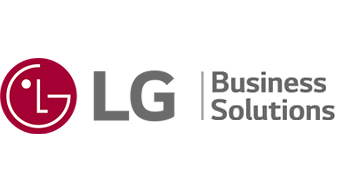-
The drive towards electrifying homes and buildings is a pivotal move in embracing sustainable living. This transition from traditional energy sources to electricity is a proactive step in mitigating climate change, overcoming the global energy crisis, and enhancing residential environments. Besides environmental benefits, home electrification brings practical advantages, including potential cost savings and improved home energy independence. In this evolving landscape, innovative solutions play a vital role, highlighting the efficiency and effectiveness of modern electric appliances. Join us for this series about all things electrification.
-
Why Electrify?
Since 1993, Americans have been progressively using more electric appliances, and 1 in 4 homes nationwide are now all-electric.1) By ditching fossil fuels, households significantly reduce their carbon footprint, directly contributing to the reduction of greenhouse gas emissions. This shift is not just about adopting new technologies; it's a powerful statement in the fight against climate change, a proactive method of addressing the energy crisis, and a way to offset the financial strain of inflation. Electrification of homes represents a tangible action that individuals can take to play a part in a global solution, moving us closer to a sustainable future.
1) 1000 Home Challenge. (2012). Mackey Deep Energy Reduction Case Study. Accessed: https://jhn.e94.myftpupload.com/wp-content/uploads/2020/10/Mackey_THC_Case_Study.pdf
-
The Benefits of Electrification
The transition to electric homes not only ensures cleaner air quality but also aligns with contemporary energy efficiency trends. Traditional gas appliances can emit harmful pollutants, which can compromise indoor air quality and pose health risks. By switching to electric appliances, these risks are substantially reduced, ensuring a cleaner and safer home environment.2)
Modern electric appliances are often more energy-efficient than their gas counterparts. This efficiency translates into lower utility bills, offering financial savings over time. The use of advanced electric appliances often leads to reduced energy expenditures for homeowners.
The practical benefits extend to providing consistent year-round comfort through the use of heat pumps, capable of both heating and cooling. Additionally, the integration of solar panels and battery storage systems enhances resilience, offering power availability even during outages and empowering homeowners with energy independence.
2) https://www.redwoodenergy.net/research/a-pocket-guide-to-all-electric-retrofits-of-single-family-homes


-
Government incentives and subsidies, such as the Inflation Reduction Act in the US, further support this transition, easing the financial impact associated with adopting these energy-efficient home technologies. Numerous electrification financial incentives are available, including federal tax credits for residential solar photovoltaic systems3) and electric vehicles4), as well as state and regional rebates for heat pumps and various other appliances.5)
3) https://www.energy.gov/sites/prod/files/2020/01/f70/Guide%20to%20Federal%20Tax%20Credit% 20for%20Residential%20Solar%20PV.pdf
4) https://fueleconomy.gov/feg/taxevb.shtml
5) For example, the Association of Bay Area Governments: https://www.bayrenresidential.org/get-rebates
-
Preparing for Electrification
Homeowners looking to embrace the future of energy can get a head start on the home electrification process by taking proactive steps today. From updating your energy plan to preparing for advanced heating and cooling systems, there are several measures you can implement to ensure your home is ready for a smooth transition to electrification. Here are some guidelines to getting started.




-
Access your utility account online or by phone to switch to a renewable energy plan, or join a local Community Solar or Wind project if such options are available.


-
Inspect your electrical panel to determine its capacity and understand how it's sized for your home's needs.


-
Arrange for a home energy audit, including a blower door test, and request an initial quote from a heat pump contractor for space heating and cooling.


-
Check the age of your current water heater and consider replacing it with a heat pump model if it's more than 10 years old.


-
Test your pans with a magnet to see if they are induction-ready, invest in a portable induction burner, and plan for a 240V / 40A outlet installation to accommodate future stove upgrades.


-
Determine whether you have a gas or electric clothes dryer and if you have the necessary 240V outlet; alternatively, consider using a Heat pump dryer.


-
Assess your daily driving distance to understand the range you'll need and search for nearby public charging stations to familiarize yourself with additional charging options.


-
If you have a garage, check for an existing 240V outlet to potentially add a Level 2 EV charger for
faster vehicle charging.


-
Utilize online resources like energysage.com to evaluate your home's solar potential and gather preliminary quotes for rooftop PV panel installation.


-
If your home has solar panels, inquire with your installation provider about integrating a battery storage solution to harness and store solar energy.
-
Embracing home electrification is a wise investment in a cleaner, healthier future. Although there are initial costs, the long-term financial benefits, such as reduced energy bills, increased home value, and government incentives, could help balance these expenses. With strategic planning, transitioning to an all-electric home becomes a confident and impactful choice, aligning personal comfort with environmental responsibility. LG also has a solution that is the perfect fit for an electric home. Curious to find out what that solution is? Here’s a hint. It’s related to the largest consumer of energy in a home. To learn about this solution and more about electrification, keep an eye out for further installments in this series.6)
6) https://content.rewiringamerica.org/reports/electrify-home-guide.pdf
Contact Us
get in touch with you soon.




